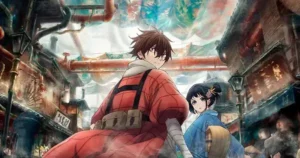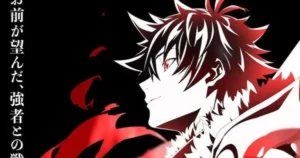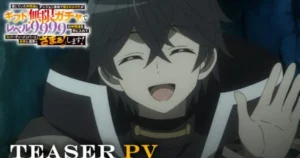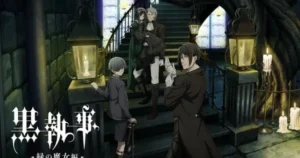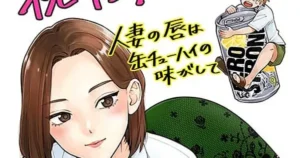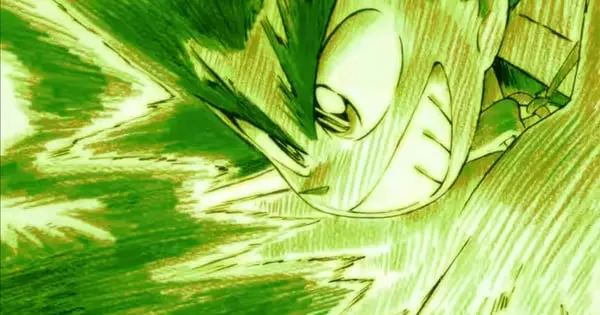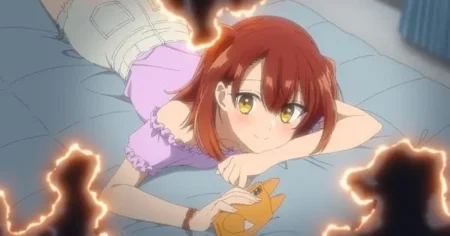The anime world is buzzing with the revival of a classic! Yaiba: Samurai Legend, based on Gosho Aoyama’s (Detective Conan) manga, has returned with a fresh adaptation by Wit Studio. The initial episodes promise a blend of nostalgia and modern animation, setting the stage for an exciting adventure. Let’s delve into the first three episodes and see what makes this series a potential hit.
A Blast from the Past with Modern Flair
Yaiba: Samurai Legend isn’t just a remake; it’s a reawakening. The series follows Yaiba Kurogane, a spirited samurai raised in the jungle, as he navigates modern Japan and battles evil forces. The new adaptation keeps the heart of the original while enhancing the visuals and storytelling.
First Impressions: Episode 1
The first episode immediately throws viewers into Yaiba’s world. We meet Yaiba, a young boy trained in the ways of the samurai in the jungle, living with his father, Kenjuro. After an attack by gorillas, they inadvertently end up in Tokyo, where Yaiba’s adventure truly begins.
- Characters Introduced: The premiere introduces key characters: Yaiba Kurogane, Kenjuro Kurogane (Yaiba’s father), Kagetora (a tiger), Shonosuke (a bird), Sayaka Mine, and Takeshi Onimaru.
- Clash of Worlds: The episode effectively contrasts Yaiba’s wild upbringing with the modern setting of Tokyo, leading to comedic and action-filled situations.
- Rivalry Begins: Yaiba’s fateful encounter with Takeshi Onimaru, a skilled kendo practitioner, sets the stage for their ongoing rivalry.
Episode 2: Yaiba vs. Onimaru
Episode 2 showcases the first real fight between Yaiba and Onimaru. This clash highlights the animation quality and art direction of the series as the two battle across a busy city.
- The First Duel: Yaiba and Onimaru’s fight spans a shopping district and even the top of a moving vehicle.
- Unconventional Tactics: Yaiba uses unexpected tactics, including biting Onimaru, to gain an advantage.
- Ambiguous Victory: Although Yaiba declares victory, he is knocked out by a road sign, leaving the actual win in question. Some argue that Onimaru’s previous injuries due to Yaiba’s traps made the fight unfair.
- Onimaru’s Transformation: At the end of the episode, Onimaru is possessed by an ancient sword and becomes a demon, setting the stage for a more intense rematch.
Episode 3: The Quest for Power
Episode 3 sees Yaiba facing the consequences of his battle with Onimaru and embarking on a quest to gain more power.
- Onimaru’s New Strength: Onimaru, now wielding the Wind God Sword, challenges Yaiba and demonstrates overwhelming power.
- The Raijin Sword: Yaiba’s father tells him about the Raijin Sword, another legendary demon sword, and the need to acquire it to stand a chance against Onimaru.
- Meeting Miyamoto Musashi: Yaiba, along with Sayaka, sets off to Mount Tengu to find Musashi Miyamoto, the legendary swordsman who is said to be over 400 years old, to obtain the Raijin Sword.
- A Chosen One: After some comedic moments, Yaiba is able to draw the Raijin Sword, setting up his next challenge against the god of thunder.
Key Themes and Elements
Several elements contribute to the appeal of Yaiba: Samurai Legend:
- Nostalgia: The series evokes a sense of nostalgia for classic shonen anime from the 80s and 90s.
- Humor: The show blends action with humor, creating a lighthearted and entertaining experience.
- Action: Dynamic action scenes with fluid animation and choreography. The opening scene of the first episode immediately declares the series’ visual intent, blending old-fashioned aesthetic sensibilities and new animation proficiencies.
- Characters: The characters are fun and engaging, with Yaiba’s energy and Sayaka’s reactions creating a dynamic.
- Japanese Mythology: The series incorporates elements of Japanese mythology, such as the Wind God Sword and the Thunder God Sword.
Production Quality
Wit Studio, known for its work on Attack on Titan and Ranking of Kings, brings its animation expertise to Yaiba: Samurai Legend.
- Animation Style: The animation blends a retro style with modern techniques, creating a unique visual experience.
- Kanada-Style Posing: The series incorporates exaggerated, dynamic poses reminiscent of Yoshinori Kanada’s animation style.
- Music: The series features an engaging soundtrack. The opening theme, “Blade” by Blue Encount, and the ending theme, “pineapple tart” by otoha, add to the overall experience.
Connections to Detective Conan
Yaiba: Samurai Legend shares a connection with Gosho Aoyama’s more famous work, Detective Conan.
- Shared Author: Both series share the same author, resulting in similar gags, archetypes, and art styles.
- Cameo Appearances: Characters from Yaiba have appeared in Detective Conan, including in the 2024 movie Detective Conan: The Million-dollar Pentagram.
Potential and Reception
Yaiba: Samurai Legend has the potential to be a hit, blending nostalgia with modern animation and storytelling.
- Positive Reception: Social media is buzzing with positive reactions to the visuals and the nostalgic feeling of the story and characters.
- Target Audience: The series appeals to both long-time fans of the original manga and new viewers looking for a fun and action-packed anime.
Final Thoughts
Yaiba: Samurai Legend Episodes 1-3 provide a solid foundation for what could be a standout anime series. With its blend of action, humor, and nostalgia, coupled with Wit Studio’s animation, Yaiba: Samurai Legend is definitely one to watch.

